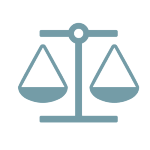2nd Circuit Holds Loan from Federal Reserve Bank Covered by False Claims Act
The U.S. Court of Appeals for the Second Circuit recently ruled that, under certain circumstances, an entity which borrows money from a Federal Reserve Bank (FRB) has made a claim to the government for purposes of the False Claims Act (FCA), notwithstanding the fact that the FRBs are usually considered private entities.
The Federal Reserve Board (the Board) is authorized to provide emergency lending to banks in certain instances, and the lending process is administered by the FRBs. Here, several large national banks received these emergency loans—at very favorable interest rates—from the FRBs during the 2008 Financial Crisis. These loans generally require that the bank receiving the loan have an overall sound financial condition. The relators who brought the FCA case alleged that the banks were in fact not eligible for the loans due to inadequate capitalization and overall poor financial condition, and further alleged that the banks made false certifications to the FRBs about their financial conditions. The district court dismissed the FCA case, finding that the FRBs were neither part of the government nor agents of the government, and that the United States did not provide the money that the banks received through the FRBs’ emergency lending program.
The Second Circuit reversed. The court recognized that the FRBs were constituted as private corporations and not as government agencies, such that FRB personnel were not officers or employees of the United States. However, the court found that the FRBs were “agents of the United States” with respect to the emergency lending program, since the FRBs were administering the lending on behalf of the Board and were serving as the Board’s operating arm, and the overall emergency lending program was operated to further the interests of the United States and not those of the FRBs’ nominal shareholders. Likewise, the Board set the terms and conditions for the loans and exercises substantial control over the FRBs’ emergency lending.
Further, the court found that the money for the emergency loans comes from the United States, since the Federal Reserve Notes which fund the loans are created by the government. Additionally, the FRBs were required to remit their excess earnings to the U.S. Treasury, such that a failure to repay the loans injured the public fisc, and not just the FRBs’ nominal shareholders.
The court noted that its findings in this case were specific to the FRBs’ role in the Board’s emergency lending program, and would not necessarily mean that the FRBs were governmental entities or agents of the government in other contexts.

